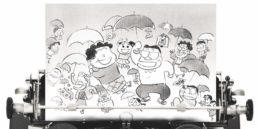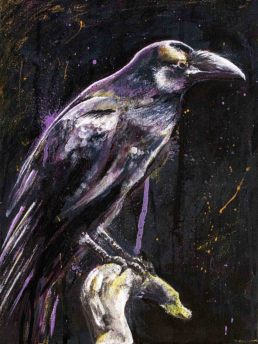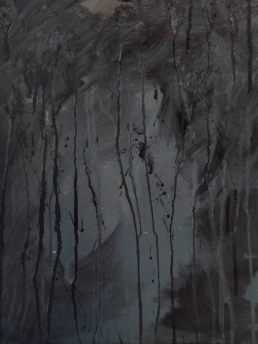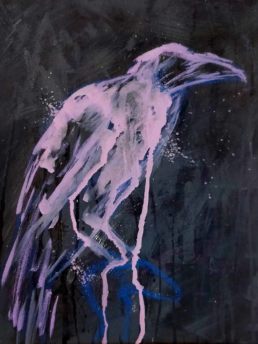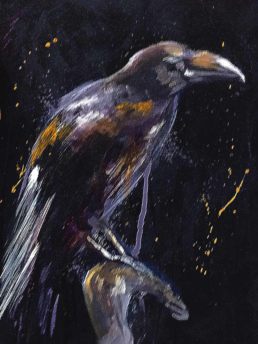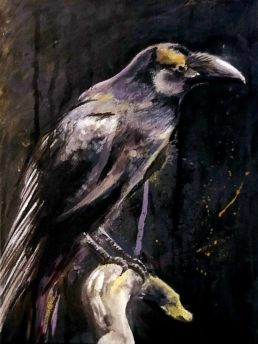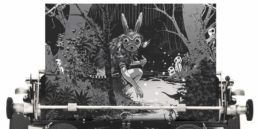Echo Chambers
A Facebook Post:
I love you all, but if you are only talking to those in your bubble who agree with you, you are missing an opportunity to understand and have someone who disagrees with you, understand as well.
As soon as someone on here argues with you, or things get heated, don’t yell back, don’t unfriend. Perhaps consider asking them to chat over the phone. And really listen. I have a feeling it’ll be a more productive interaction.
*Edit: I understand this topic is more nuanced than my original post implies. Interactions on social media can lead to conversations and revelations of someone’s true colors. You then have to take a hard look at that relationship and decide the level at which you care for them. For some, acquaintances can be dropped easily. For me however, I have, and will, probably again let people go from my life. But if were me, I’d want that phone call first. I want to understand.
the violence dept
For incidences that need violent answers, you call the violence dept. For all other incidences, your call will be redirected.
Enforcement
“There’s a reason you separate military and the police. One fights the enemies of the state, the other serves and protects the people. When the military becomes both, then the enemies of the state tend to become the people.”
—Admiral Adama
Principles of Legitimacy of Principles
PRINCIPLES OF LEGITIMACY OF PRINCIPLES
OUR VOICE
THEY RECOGNIZE | DEAFNESS ENSUES
RULES LEARNED
EXPECTATIONS FULFILLED | INCONSISTENCY POISONS
TREATMENT FAIR & JUST
FOR ALL | FOR SOME
This entry is part of 2020’s Project 365 – Shattered Hindsight
the fire inside
We pull the emptiness close as does a newborn its blanket.
Suddenly, FIRE rages and fills us.
We are blinded, burned;
It vanishes instantaneously.
We never feel its warmth.
Before it blows away,
We pull the ash close as does a newborn its blanket.
My Neighbors the Yamadas, 1999
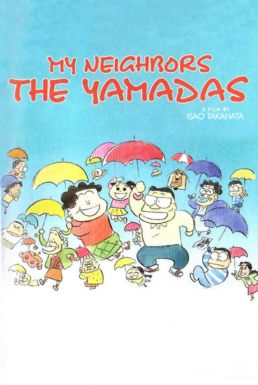
My Neighbors the Yamadas (1999) – [subtitled]
Neighbors is comprised of many vignettes, individual comic strips if you will, reflections on various aspects of life’s meanings and the ups-and-downs of being part of a Japanese family in the late 90s. Many of these are mundane, uninteresting, and humorless. The rare ones that are not are great in comparison. The numerous, unending vignettes do well to paint a picture and bring to life the characters in this family.
The film actually begins beautifully in a fantastic metaphoric visualization of the journey of marriage and starting a family. That part of the film is worth seeking out, if nothing else. Near the end we get a glimpse of the father’s feelings of inadequacy and ineffectiveness after an amazing chase scene. I found this to be the most powerful part of the film and wish there was more of it.
In some ways it’s difficult to believe this director gave us the deeply moving Grave of the Fireflies. However, Neighbors in many ways is a deeply sad film as well, the family walks that thin line of loving one another and not really being that interested in each other. The film ends with the message: Acceptance is the only way out of totally unacceptable situations. I wholeheartedly disagree.
Acceptance of what life throws at you, acceptance of the little irritations in life, acceptance of the consequences of your actions. Even acceptance of the monotony of life. Since many things are out of our control, it’s a good idea to accept reality. To a point. I wish the film had given us an example of something we should **not **accept. Something we can change, something worth fighting for.
There is some nuggets of wisdom sprinkled throughout Neighbors, and the animation is simplistically elegant with a few artistic gems. It just didn’t move me, I found myself waiting for it to be over . This was strange and off-putting for a Ghibli film.
The Raven
Dean
The Raven was a super fun piece to dive into. It was made with love for some good friends as a huge thank you for all they’ve done for me over the years. I again dove into reusing the acrylic paint I rescued that would have otherwise headed to landfills. Accenting with oil pastels and splashing India ink along the way.
Its creation was bittersweet. I have never intentionally parted with a painting before. I have found every sketch, doodle, painting, to be so very personal, that I have selfishly hung on to them all. Afraid that if it left, I would never see it again. That said, I love that I feel confident in my art enough that people would want it as a gift. This just might be the beginning of a whole new chapter.
Princess Mononoke, 1997
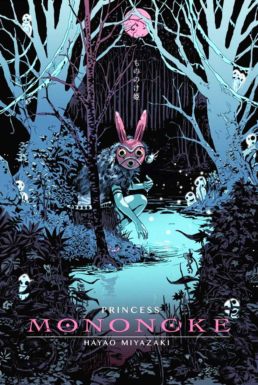
Princess Mononoke (1997) – [subtitled]
I’m watching all the Studio Ghibli films chronologically and sharing my thoughts.
A masterpiece of film-making. An epitome of perfection.
Set in a time between times, on the edge where reality and myth collide, where gods and demons dwell in the realm of man’s emerging technological striations. A fight for balance emerges, nature verse industry, good verse evil, past verse future, myth verse modernity, individualism verse societal conformity. This movie is brilliant in bringing to life its characters without falling prey to traditionally perfect heroes and hateful villains. In fact, many of the character are so rich and complex that they are neither heroes nor villains, yet can and do oscillate between.
Lady Eboshi has create a town where everyone is treated equally, lepers, prostitutes, everyone no matter the race, sex, or who they were before, coming together to create a hardworking, caring community. She is, in many ways, the best of humanity trying to prosper for the benefit of her people. Yet, she is also the worst of humanity, as she is attempting to destroy without understanding, believing that the world belongs to man, not that man is simply part of the world.
San is the defender of the forest and of nature against the indulgences of man—heroic indeed. Yet she lashes out, willing to kill any human necessary to achieve her goal. Humanity is one thing to her, a plague that needs to be cleansed from this world.
Ashitaka, is the balance, the harmony. He befriends and assists both women, showing them there is only one side to the conflict—coexistence.
The beauty of the film cannot be overstated. The visuals and character design are beyond amazing and are a delight to watch. Miyazaki and Studio Ghibli are master craftsmen and it’s quite obvious the love and respect that has gone into every film this studio has released. That said, Princess Mononoke feels bigger, denser, more ambitious, than previous films. Simply, I cannot give any film a higher praise.
File under 'existing'
Sensations of touch dissolving from recall, while its importance sears under the skin. It’s been longer than a month in many ways. A glaze of numbness gently washes over me. What once noticed out the side of my eye, is placed squarely—the sameness of my days, as if my life is being churned out by a noisy, decades-old photocopier—𝙵𝙰𝚆𝙰𝙼𝙿! I write minor edits to the sheet. And I file it under ‘existing’. Living, no, this is a dream I float through, blinking through the hours, aware I’m making lunch again, or popping in for the daily run—didn’t I just do this, what day is it? Right. It’s just today.
Whisper of the Heart, 1995

Whisper of the Heart (1995) – [subtitled]
I’m watching all the Studio Ghibli films chronologically and sharing my thoughts. Some again, some for the first time.
Yoshifumi Kondo’s first and only film for Studio Ghibli is, above all else, a tribute to young love, idealized and unrequited. But it is also, much, much more.
As a film, it’s wonderful, refreshing, and undeniably sweet. As a Studio Ghibli film, I must say, it is missing some of the magic and cohesion of its predecessors. Whispers is a heartfelt and sentimental look into the life, love, and passions of Shizuku, a 14-year old girl who is a dreamer, loves to read, follow cats all over the city, and translate random American songs from the 70s apparently.
In a lot of ways this is a love letter to adolescent love. It’s impossible not to take away a bit of its hopeful romanticism as you watch a young girl’s loathing turn to admiration, then naïvely, adorably, and literally at the last minute, turn into full blown love. But I found a different part of this film compelling.
It’s when we see the creative side of our characters emerge that really moved me. It’s Shizuku when she’s inspired to write her story, the hardships and the dedication that she has for it. Seiji’s woodworking, attempting to master the art of creating a violin, and then when he prods Shizuku into singing, her transitioning from reluctancy to joyfully smiling and clapping is the highlight of the entire film.
Whispers plays with the importance of discovering yourself and following your dreams while dealing with self-doubt and seeking approval. I just wish this theme was more deeply explored. I loved the moments where Shizuku’s story was visualized in classic Ghibli fashion, but it seemed fleeting, tacked on, and almost non-consequential. One of most profound moments of the film happens after she shares her completed story with old and wise, Shiro Nishi. After she self criticizes, he responds, “That’s true. It’s a bit rough, unpolished, and incomplete. But you’ve shown me the first jewel you’ve crafted. You tried hard. And you did great. There is no need to hurry.”
I’d be amiss if I don’t include my thoughts on the amazing John Denver song, Country Roads that features, quite oddly, in this picture. I’ve always understood the song to mainly represent a love of a place or time, or more succinctly, a missing of or home sickness for it. I cannot see how this theme fits within the film much at all, except perhaps as a meta theme the writers have for their youth.
Overall, Whispers is a bit disorderly, but still is a unique and sweet glimpse into the life of a young girl and those around her, discovering who she is and who she wants to become.




